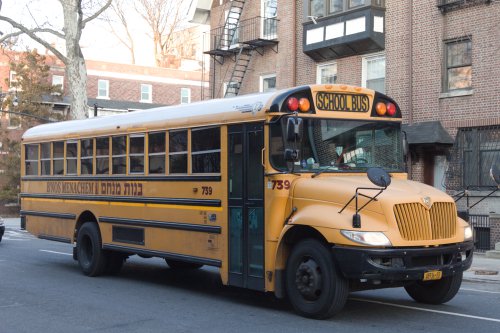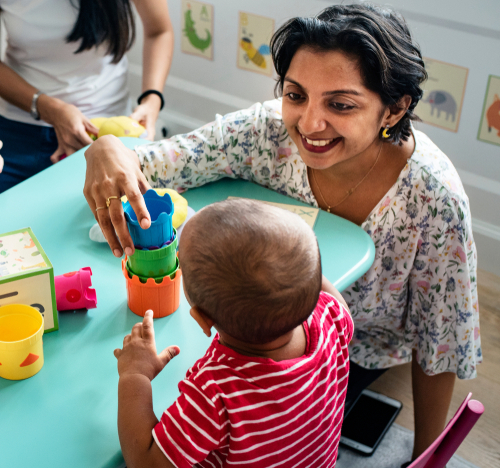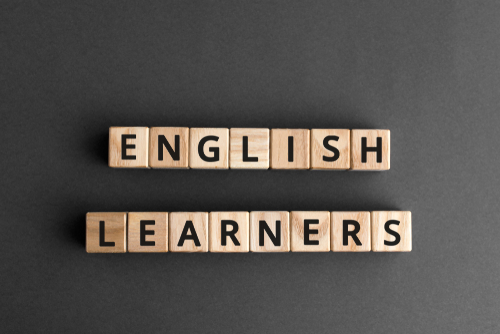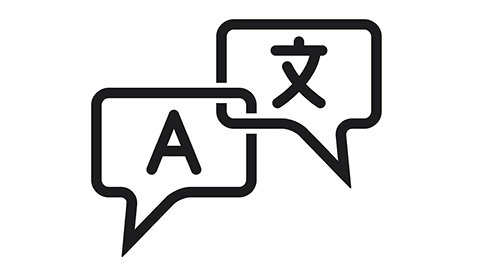2021-22 Back to School Guide

Dear families,
Once again we are approaching a new school year in the midst of the COVID-19 pandemic. For many parents and caregivers, returning to school during this ongoing health crisis is a cause for uncertainty, as we navigate ever-changing guidance to keep ourselves and our loved ones safe. Yet in spite of the challenges, our collective commitment to high quality public education for all students is a remarkable sign of our resilience and strength as New Yorkers.
As a parent, I know that the more information we have at the beginning of the school year, the better prepared we are to advocate for our children and ensure they have what they need to be successful. In that spirit, my office has created this Back to School Guide to place educational resources, contacts, and information at your fingertips.
This year schools will have a variety of health and safety measures in place, and students who are eligible to receive the vaccine are strongly encouraged to do so. Over the past year, the City has operated in-person school and summer school by implementing multiple safety protocols, including mandatory masking, improved ventilation, distancing, and making use of outdoor learning opportunities. The latest details about school safety measures can be found here or by calling 718-935-2200 (Monday-Friday, 8 a.m.- 6 p.m.) or 311. Please contact your school directly with any questions that are specific to your child’s education or refer to your child’s NYC Schools Account.
As we head into this new school year, I hope this guide can help navigate obstacles to learning that may emerge for any individual student, family, or school community. Feel free to e-mail action@comptroller.nyc.gov or call (212) 669-3916. My office is always here to support you.
Thank you to all the teachers, principals and school staff who are working so hard to start this school year off right. Best wishes to all for a safe and successful school year!

Scott M. Stringer
Parent and Caregiver Engagement

Photo credit: fizkes/Shutterstock
Getting involved in your child’s school is an excellent way to support your child and make a difference in the community. Now more than ever, schools need to know parents’ perspective and to communicate frequently and transparently with families about pressing health and academic information.
There are many ways to become involved in your child’s school, from regular communication with teachers and administrators to involvement with your school’s PTA. Learn about the many ways you can connect with your school community on DOE’s Family Empowerment page.
Most schools have the following organizations for parent involvement:
- Parents Association (PA) / Parent Teacher Association (PTA)
- School Leadership Team (SLT)
- School Wellness Council
In addition, each school district has a Community Education Council that serves as an advisory body to the Chancellor and the Panel for Educational Policy. CECs meet monthly to discuss the state of schools in the district and to advise and shape educational policies that support student achievement. There are also four Citywide Education Councils: High School, English Language Learners, Special Education and District 75.
Bussing

Photo credit: Lennox Wright/Shutterstock
Your child may be eligible for yellow bus service based on their distance from school, grade level, or other factors. The DOE’s one page transportation guide gives a summary of all transportation options.
All information about your child’s school bus – including route, schedule and real-time bus information – can be accessed in your child’s NYC School Account (NYCSA).
Alternately, contact your school age, Pre-K, or Early Intervention bus company directly when you want information about your child’s bus route, schedule or location.
Devices and internet access

Photo Credit: Gorodenkoff/Shutterstock
While New York City education officials have indicated that all students will return to in-person learning full time this school year, classrooms may continue to incorporate tools and technology used during the period of “blended instruction.” For families, this may require continued access to an internet-enabled device, such as a laptop or tablet, and reliable internet access.
The following resources can help eligible families find discounted broadband internet:
- FCC Emergency Broadband Benefit – up to $50 discount per month and a one-time discount of $100 to purchase a laptop or tablet from participating providers. New York City residents can check eligibility for the program here.
- In addition, free public wi-fi is available through the city’s Broadband Access program located in various parks and community centers throughout the city.
- New York Public Library, Brooklyn Public Library, and Queens Public Library have all resumed operations in most branches, and offer free wi-fi and computer sessions for guests.
If your child currently has a DOE-issued tablet and you need technical support, access DOE’s Technical Support for Families portal or call the helpline at: (718) 392-8855.
If you need to replace a lost or stolen device, families will first need to file a police report and then contact DOE’s helpdesk for a replacement device.
Note: DOE is no longer filling requests for new devices from the central office. Contact your child’s school if you believe your family will need a device for the 2021-22 school year.
Meals

Photo credit: Sandra Cunningham/Shutterstock
Throughout the pandemic, City schools have been providing free “grab and go” meals to any New Yorker, with a variety of meal options at certain locations, including halal, kosher, vegetarian, and ready-to-cook meals. To find a meal distribution location, text “NYC FOOD” or “NYC COMIDA” to 877-877 or search the map to find a community meal site.
During the school year, district public schools offer free breakfast, lunch, and afterschool meals to all students. Participating pre-K programs and many private and charter schools also offer free meals. Menus for each meal are available on the NYC School Food website.
If your child’s school does not provide a snack or meal during afterschool, contact your principal and parent coordinator, email: sf-SpecialPrograms.nyc.gov, or call (718) 707-4320.
Academic Support

Photo Credit: Maria Symchych/Shutterstock
As part of the Academic Recovery Plan announced by the Mayor and Chancellor, all schools will be given supplemental funding to offer targeted supports for students who fell behind during remote learning. Schools can use this funding for various services, including afterschool and enrichment opportunities, or tutoring for students who need additional support to succeed.
Many children have experienced delays in their academic progress due to the disruptions caused by COVID-19. It is particularly critical for children in elementary school to build foundational reading skills so they can succeed in later grades. If your child is showing signs of delays in learning to read or needs additional academic support, talk to your parent coordinator or principal to find out what types of targeted supports are available in your school.
Afterschool / Childcare

Photo Credit: Rawpixel.com/Shutterstock
There are hundreds of afterschool programs serving students in grades K-12 throughout the city. Afterschool programs are operated through Comprehensive Afterschool System of NY (COMPASS NYC). Most programs are free and are located in school or a nearby community center. To find a program that is convenient for you, use the program locator on the Department of Youth and Community Development website. Many schools also offer affordable afterschool care for enrolled students. Contact your child’s school to learn what is offered.
Child care programs in New York City have been operating throughout the pandemic, following health and safety guidance issued by New York State. Families have a number of different child care options available to them:
- Childcare Connect is the best place to start to search for a licensed childcare facility that is convenient to you.
- EarlyLearn programs provide free or low-cost childcare for infants and toddlers from eligible families.
- NYC Pre-K Finder can help you find free programs for three-year-olds and four-year-olds through 3-K for All and Pre-K for All.
- New York City offers financial assistance for eligible families with children ages 6 weeks through 12 years, or through age 18 for children with special needs. To learn if you qualify for subsidized child care and to apply, visit the NYC Administration for Children’s Services.
- The Day Care Council of New York is an organization of publicly-funded child care centers and can help families locate providers that may meet their needs.
Mental Health

Photo Credit: SewCream/Shutterstock
Each school in New York City offers mental health resources to students. While services can vary, at a minimum, students in need can be connected to community resources or mental health providers. To get mental health services for your child through your school, talk to your parent coordinator or school social worker. For more information about school-based support for mental and behavioral health, contact: MH@schools.nyc.gov.
In addition to school-based resources, here are other ways to find mental health supports through community providers:
- NYC Well is a confidential mental health information and referral line with access to mobile crisis teams staffed by trained social workers 24 hours a day, 7 days per week. Interpretation services are offered for 200+ languages. To get help, text “WELL” to 65173, call 1-888-NYC-WELL (692-9355), or chat now.
- NYC Well also provides free digital mental health resources.
- New York City Family Resource Centers offer individual and group-based family support services to parents or caregivers of children and youth at risk of developing mental health problems. Centers are located in each borough and a list of phone numbers can be found on the NYC School Mental Health website.
- New York State Office of Mental Health has a searchable mental health program directory.
- The Health Information Tool for Empowerment (HITE) provides information on thousands of health and social services available to low-income or uninsured New Yorkers.
- The Division of Child and Adolescent Psychology at Columbia University has a list of local and national mental health resources for youth, adolescents, and families.
- Weill-Cornell Center for Human Rights publishes a Guide to Mental Health Resources in NYC, including free and low-cost services in each borough.
- Telehealth services are available for families through community-based providers.
- Referral services and adolescent skill centers for children and youth with serious emotional and behavioral challenges, along with other resources, are listed
Bullying / Harassment

Photo Credit: apghedia/Shutterstock
If your child is experiencing bullying or harassment in their school day, inform school staff immediately. Every school has a Respect for All liaison, who will report the incident and track further investigation. If you feel that your school has not handled the situation adequately, contact the district superintendent to file a report.
Incidents can also be reported by calling (718) 935- 2288 or emailing the Office of Safety and Youth Development: RespectforAll@schools.nyc.gov.
To anonymously report bullying, use this online form.
Housing / Homelessness

Photo credit: Joel Raskin/Shutterstock
All children are entitled to the same high quality public school education, regardless of housing status. When students do not have stable housing, it can have a negative impact on their learning experience. Students who experience homelessness have rights and protections, including the right attend the same school the student attended before becoming homeless, and the right to transportation to and from school.
If your family experiences housing instability, talk to the parent coordinator or a social worker at your school for supports to help your child succeed in school. In addition, other resources include:
- Homebase. New Yorkers experiencing housing instability or homelessness can find services to prevent eviction and obtain public benefits, emergency rental assistance, and other supports at Homebase centers in every borough.
- Office of Students in Temporary Housing. The Department of Education office that helps families with school-age children in temporary housing has a complete list of regional managers/liaisons who can help ensure your student receives the education and services they are guaranteed.
- DOE Family Assistants in shelters. Many shelters in New York City have a Family Assistant on staff, a DOE employee who can help families with enrollment and transportation.
- NYS-TEACHES. If you have questions about whether your child is eligible for services under Federal law, call: 800-388-2014.
- Advocates for Children’s Tip Sheet for Students in Temporary Housing
- Legal Services NYC provides legal assistance, advice, and advocacy to low-income New Yorkers facing eviction.
- Legal Aid Society provides critical legal services to help prevent eviction and displacement. Call the neighborhood offices in your borough to learn if you qualify for free legal assistance:
- Manhattan: 212-426-3000
- Brooklyn: 718-722-3100
- Bronx: 718-991-4600
- Queens: 718-286-2450
- Staten Island: 347-422-5333
- The Homeless Rights Project works to protect the legal rights of homeless families. Call the helpline at 800-649-9125, Monday – Friday 9 a.m. – 5 p.m.
- The New York State Emergency Rental Assistance Program (ERAP) provides economic relief to low and moderate-income households at risk of experiencing homelessness or housing instability. Check eligibility requirements and apply directly on the Office of Temporary and Disability Assistance’s online portal. Immigration status is not considered.
Special Education and Services

Photo Credit: DeeaF/Shutterstock
All students are legally entitled to a free and appropriate education. For students with disabilities, any necessary services they require as part of their education are documented in an Individualized Education Program (IEP), a legal document describing how the school system will provide them with their educational rights under law. It is the responsibility of the Department of Education to provide these services and to ensure students with disabilities are accommodated alongside nondisabled peers wherever possible.
During school closures related to COVID-19, IEP meetings should have continued remotely by video or phone. Students with mandated services including occupational therapy or physical therapy may not have received all services due to school closures. This year, resources are available in all schools to better support students with disabilities through:
- Afterschool and Saturday programming for students with IEPs to receive additional instruction and related services;
- Additional seats in pre-K for students with disabilities;
- Continued instruction or consultation about post-secondary planning for eligible students with disabilities who are age 21+.
A parent may request that their child be referred for evaluation for special education services. If you believe your child is not receiving adequate or appropriate services, you may request a hearing to challenge the determination.
The Department of Education provides the following information and resources:
- The New York City Department of Education’s pages about special education and the IEP process.
- The New York City Department of Education’s Family Guide to Special Education Services.
- Know Your Rights in ensuring a Free Appropriate Public Education for your child with disabilities.
- Call the DOE Special Education Hotline at 718-935-2007 or 311 or find phone and email contacts at the Department of Education who can help resolve questions and concerns about special education evaluation, support, and services.
There are many excellent organizations outside the Department of Education that offer advocacy, support, and counsel regarding special education services, including:
- Advocates for Children of New York
- ARISE coalition
- INCLUDEnyc
- The Legal Aid Society
- New York Lawyers for Public Interest
Services and Programs for English Language Learners

Photo Credit: OneSideProFoto/Shutterstock
If a language other than English is spoken in your home, the school may give your child the New York State Identification Test for English Language Learners to determine whether they need language support. If so, they will be designated as an English Language Leaner (ELL) and are entitled to supports to learn English.
NYC Schools offer three types of programming for English Language Learners:
- English as a New Language – these programs provide instruction in English while using supports in the students’ home language;
- Transitional Bilingual Education – these programs begin by providing instruction using a combination of the student’s home language and English. As students become more confident writing, speaking, and understanding English, the instruction transitions to English-only;
- Dual Language – instruction is provided equally in both English and another language (Spanish and Chinese are most common). The goal is for students to be fully proficient in both languages, and classrooms include both English-learners and students who are proficient in English.
A directory of English Language Learner programs offered in each schools can be found here. If your child’s school does not offer the type of programming you prefer, the principal or school administration can help transfer your child to a school that does.
Here are some additional resources to support multilingual learners:
- The DOE has compiled information for English Language Learners and resources for families of English Language Learners.
- There are community organizations in each borough that support multilingual learners.
- Advocates for Children offers a guide for Translation and Interpretation Services in New York City Public Schools and for Immigrant Families.
Translation Services and Language Supports for Families

Photo Credit: OneSideProFoto/Shutterstock
Parents have the right to receive all important school information in their primary language, as well as language interpretation at meetings, orientations, and hearings. To request interpretation, contact your school’s parent coordinator or principal.
Read the Bill of Rights for Parents of English Language/Multilingual Learners